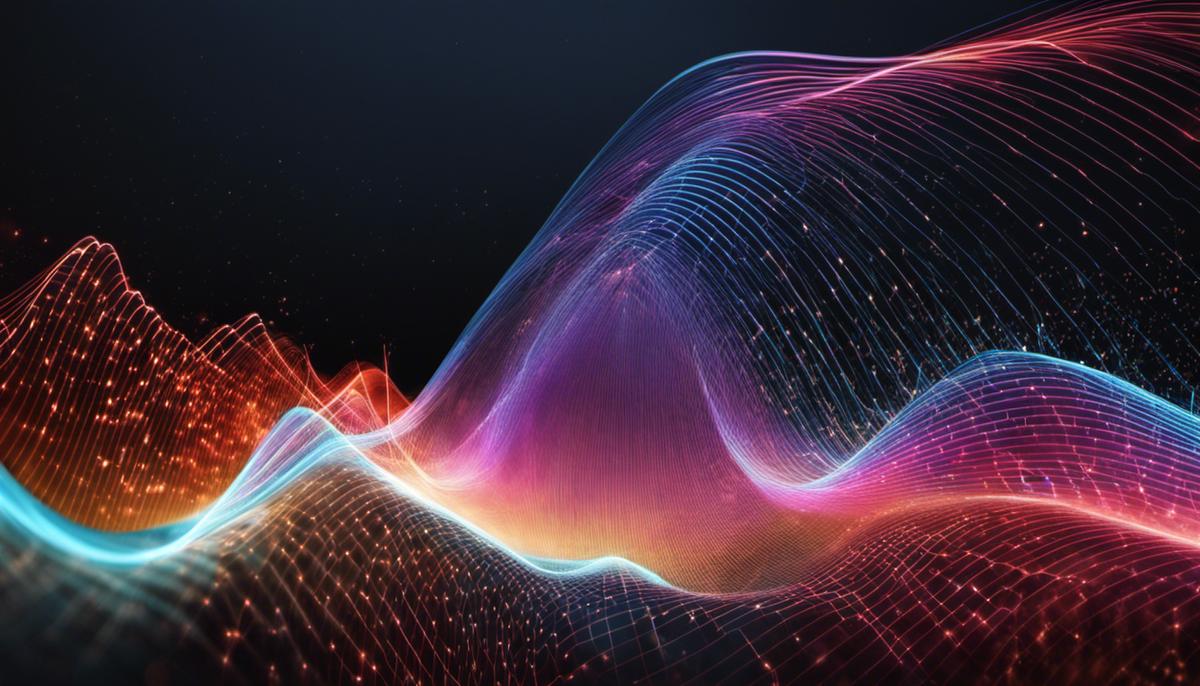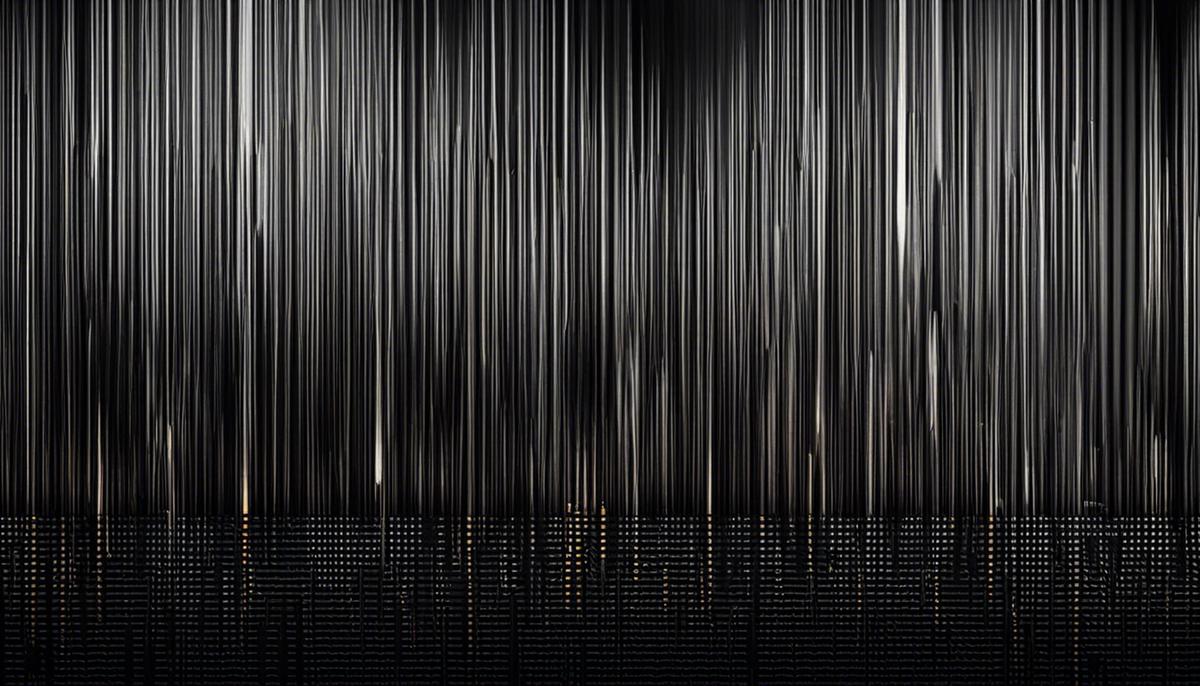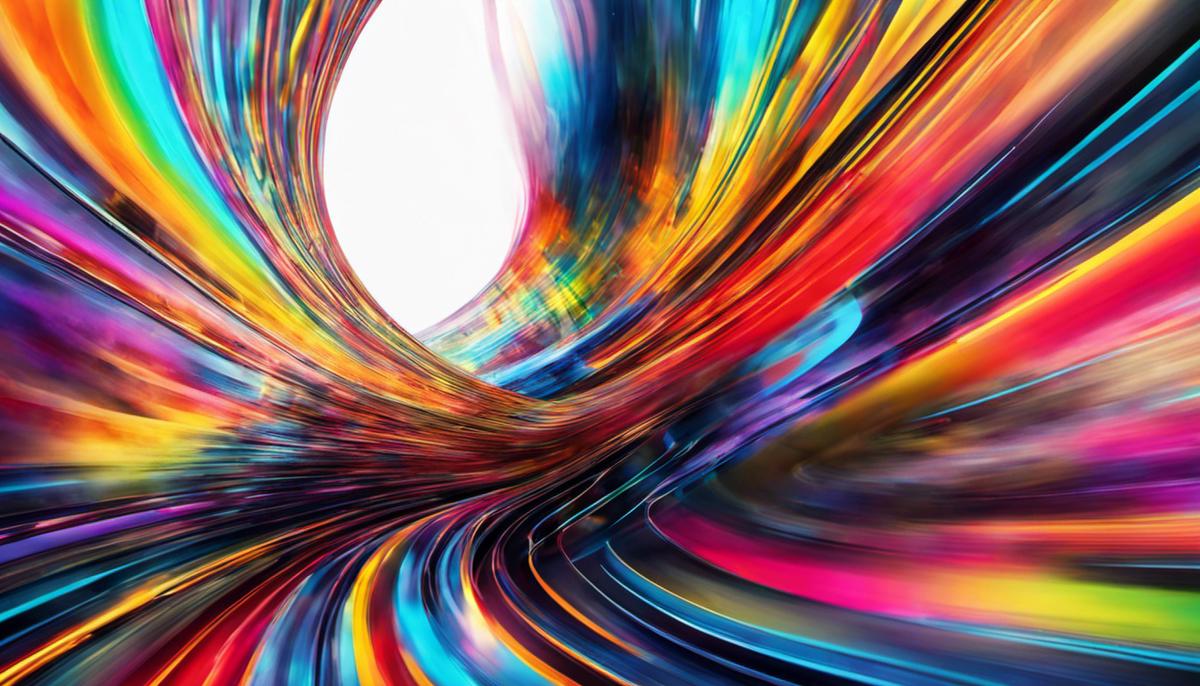In today’s era of sound engineering, digital audio has taken center stage, transforming the ways we create, consume, and manipulate music. Its rise to prominence necessitates an in-depth comprehension of its workings, including the possible glitches and distortions inherent in the system. This journey into the world of digital audio takes us through its fundamental concepts, from the basic principles of its operation, its advantage over analog counterparts to its nitty-gritty characteristics. We dissect the phenomena of clipping, aliasing, and jitter, shedding light on their core principles and their effects on our music, while concurrently presenting strategies to combat these distortions for optimal audio quality.
Understanding Digital Audio
The symphony of sound that we have come to know as music has been the lifeblood of civilization for millennia. From the rhythmic pounding of sticks in tribal gatherings to the sophisticated manipulation of digital sounds, music has truly evolved, yet it retains its pristine nature of reaching into our spirits and unbinding the chains that fetter us. In the contemporary system of sound arrangement, one innovation stands tall, casting a profound shadow on direct acoustics: digital audio in music. It holds a beauty so profound, and complexity so enormous, that it transforms the ephemeral into the tangible, making music a truly consumable and transformative art.
Dive into the uniquely captivating aura and you will discover why digital audio has become a triumphant symphony in itself, shaking the very foundations of musical creation, appreciation and distribution. Digital audio unearths an insatiable thirst for perfection, providing recording artists with the opportunity to create, edit, and replicate perfect renditions of their compositions. Gone are the days when musicians had to rely solely on acoustic perfection and hours of retakes to recreate the optimal version of their work. Digital audio equips artists with the flexibility they need to manipulate and sculpt every note, every harmony, and every beat.
Yet the beauty of digital audio is not just in its creation, but in the listening experience, it provides. This dynamic form of artistry allows for an inconceivable audio quality that pierces the veil of standard comprehension, giving the listener an immersive experience impossible to recreate without it. Whether it’s the tingling sensation from a perfectly engineered bass drop or the subtle echo of an acoustic guitar, this powerful tool enables audio engineers to fine-tune every detail of a musical piece, elevating the experience for those at the receiving end.
Despite its undeniable allure, one must not overlook the complexity that dances behind the scenes. The transformation of raw sounds into a seamless flow of digital audio requires an intricate process of sampling, quantization, and encoding. Each step is crucial, demanding a labor of precision and understanding only known to diligent audio engineers who have mastered the craft. It’s a harmonious blend of mathematics, physics, and sound technical knowledge, translated into an art form that transcends ordinary music comprehension.
Remarkably, digital audio is a universal sculptor, bestowing its gifts upon a vast range of music genres. Its artistry is not genre-biased, it reverberates through the pulsating beats of EDM, works magic in the ethereal realms of classical compositions, and breathes life into the raw power of rock and roll. Through digital audio, every genre can attain an unprecedented level of precision and polish.
The beauty and complexity of digital audio lie not simply in the pure virtuosity of sound but in its power to transcend borders, unite cultures, and democratize music. A digital audio file, in all its simplicity and complexity, bridges oceans allowing a teenager in the heartland to connect with a Busker halfway across the globe. It has emancipated music from the physical, ushering it into a realm built purely of bites and bits, where it can be enjoyed in its exalted form, far and wide.
Digital audio in music is more than a technological marvel. It is the driving force of our ever-evolving music culture, and a testament to human creativity and expression. It plunges musicians and listeners alike into a dance with sound, enhancing every twist, every turn, and elevating the shared experience to extraordinary heights.

Decoding Clipping
As we plunge further into the technicolor tapestry of musical virtuosity, we find ourselves fixed in a digital domain. This sphere, for all its prismatic versatility, is not free of imperfections – namely, the sinister phantom known as clipping, a distorter of our revered rhythms and euphoric entrancements.
Clipping is the audible distortion that occurs when an audio signal attempts to cross the limits of amplitude, pushing past the maximum decibel levels capable of being reproduced by any given system. This transgression creates a sharp, undesired cut-off, transforming notes that once sung into unmelodious monsters.
Digital audio is engineered precision, a meticulously calculated array of bits and bytes. But in the avaricious pursuit of loudness, we find this precision falling into a veritable pandemonium. The introduction of clipping is a liquefying lava-lamp of loudness war casualties. Artists and producers striving for maximum auditory impact often fall into the trap of over-amplification, causing peaks of their musical composition to be truncated or flattened, generating the distinctive distorted noise.
Modernity has swaddled us in a universe of cinematically sweeping orchestral scores and foot-thumping electronic beats. But without careful attention paid to the beast of clipping, we risk tarnishing these melodious masterpieces of artistry. Floating through the pulsating veins of euphoric beats and lofty tunes, digital audio’s insidious doppelganger can swiftly turn sonic ecstasy into ear-splitting agony, muting the intricacies of harmonies, and erasing the delicate echoes of an artist’s soul-song.
So, we take a beat – pause the ascent into booming decibels – to administer an antidote to this menacing malady. In this technicolor realm, vigilance is the watchword. Cue the music, and let the sound engineering arts serve their purpose of protecting the integrity of our digital symphonies. The tools that offer us the ability to shape, rearrange, and refine sounds can also keep clipping in check.
From dynamic range compressors to soft limiters and automated level control plugins, there is a pantheon of audio processing solutions. These tools regulate volume levels, prevent amplitude spikes, and preserve the intimate nuances of every strum, beat, and chorus. They ensure that each electronically engineered note can surge unfettered, with full-bodied vibrancy, through our headphones and speakers, without succumbing to the dread distortion of clipping.
In the realm of digital audio, the symphony of sound bites sculpted into melodies, harmonies, and rhythms is an unending tableau of precision. Amidst this pixelated pantheon of sound, we are behooved to serve as the guardians of musical fidelity. Ensuring our beloved scores remain untarnished by the clawing hands of clipping is a testament to our collective love and reverence for the transformative power of music.
The enigmatic universe of melodies, timbres, and rhythms is a playground of infinite possibilities. Despite the lurking ghost of clipping, all we need is a keen ear and relentless determination to extract the true essence of our favorite tunes. After all, music is about feeling the pulse of the beat, echoing the rhythm of our hearts, and guiding us on an exhilarating voyage across the boundless sea of emotion. So, here’s to preserving our treasured tunes and crowd-moving beats from the phantom that is clipping, and to exploring the vast, vibration-filled void of the digital audio cosmos.

Aliasing Unveiled
Amidst the crescendo of digital music symphonies and harmonious human-machine collaborations, aliasing stands as an intriguing concept that often nudges on one’s perception of audio. The subtle beast of aliasing strikes a harmony of technicality and abstraction, subtly shaping the listening experience of each Audiophile.
Aliasing, a distinctly digital phenomenon, gracefully waltz into the scene when a piece of audio is converted from an analog signal into a digital signal. Temporarily defying the immersive, life-enveloping symphonies, we delve into this transformation, delicately stripping away the magic to illuminate the machinery underneath. The grating hip-hop beat, the soulful strains of a violin, the pulsating rhythm of techno – they all dance to the tune of this digital rendering.
Let’s condense the concept of aliasing to a simple, audaciously oversimplified explanation – it’s like an agile pickpocket in a crowded subway car, stealthily morphing the musical note while its soul is in digital conversion. This transforming process closely listens to the enactment of the ‘Nyquist-Shannon sampling theorem,’ which propounds that audio must be sampled at least twice the highest frequency. An overture in ignorance of this rule ushers aliasing into the extraordinary spectacle of music.
In the realm of digital audio, aliasing isn’t simply a nuance to purists in search of tonal perfection, but it significantly alters the integrity of the music, enveloping it with an uninvited layer of distortion. Imagine it as an uninvited guest who saunters onto the stage in the middle of the philharmonic symphony, casually playing bagpipes.
Yet, in pure defiance of acoustic precision, some composers playfully flirt with aliasing. In electronic music, especially in genres radiating a raw, metallic edge, aliasing is purposefully induced to render a texture that’s sublimely grunge and cutting-edge. A daring sound designer may even surgically wield aliasing as a chisel, sculpting an element of ‘imperfection’ that makes their symphony truly human.
However, it’s essential to keep one’s musical ears keen and vigilant of unwelcome aliasing in general music appreciation. Tools, software, and digital filters exist, offering a firewall against this unwelcome distortion. It is these detailed nuances and the interplay between technology and raw, passionate music that brings about a uniquely digital flavor to the vast symphonic landscape.
The story of aliasing in digital audio is a story of borders crossed and frontiers explored, seeking to capture the excitement of tones and beats within the finite confinements of digital encoding. From the enigmatic whisperings of aliasing comes a cue to reconcile the perfection offered by digital precision with the undulating, unpredictable beauty of raw notes. Undeniably, the thrilling saga of sound engineering underscores the infinite power of music as an indomitable area where technology dances to the rhythm and beat of creativity, and not the other way around. Steeped in this understanding, the act of enjoying music takes on a different note, becoming part of a larger experience, an expansive language that unites us all in the digital age.

Jitter: An Unseen Alterer
Striding further into the invigorating landscape of digital audio, many music enthusiasts and audiophiles alike encounter the enigma of jitter. This obscure phenomenon, often sidelines, wields a subtle influence over the musical journeys each of us embarks on.
Like an unpredictable current beneath the glassy surfaces of digital music, jitter can alter the course of audio signals. It refers to the temporal variations of a digital signal’s fundamental pulse, typically manifesting as slight anomalies in timing precision during signal conversion. Although seemingly trivial, these small disruptions can trigger substantial changes in the resulting sound, infusing it with slight blots of distortion.
Jitter rests at the crossroads of music and technology, embodying the dual nature of the digital music experience. It’s an offbeat drummer, hijacking an otherwise flawless rhythm, turning perfection into acoustic authenticity with its unusual tempo.
Diving into the chaotic beauty of live performances, it is jitter’s invisible hand that transforms a polished studio recording into a unique, on-the-spot creation. This slight irregularity breathes life and spontaneity into the digital world, preserving the raw authenticity of music that often risks being watered down in the digitization process.
However, unchecked jitter can lead to a disorienting labyrinth of distortion. This can permeate our listening experiences, rendering symphonies that were originally harmonious into jarring, divergent compositions. Chasing the immersive, high-definition experience of digital audio, enthusiasts are often driven to grapple with jitter, striving for a delicate balance between its creative potential and disruptive tendencies.
Though jitter poses a gnawing challenge to sound engineers, it has catalyzed pioneering developments in audio technology. Anti-jitter circuits, clock recovery techniques, and high precision oscillators are among the arsenal employed to minimize the indelible fingerprints of jitter. Just as music festivals bring together disparate notes under a unified melody, engineers and enthusiasts join forces in their shared pursuit of harmony in digital music.
Delving into the imaginative realm of electronic music, artists are experimenting with controlled introduction of jitter to push boundaries. This deliberate dalliance with disruption challenges traditional ideas of perfection, bringing forth innovative soundscapes that invite the listener into a vibrant conversation.
Jitter underscores the symbiotic relationship between man and machine, where music’s emotional ardor dances with digital precision. The phenomenon reminds us that even within the perfectly calculated world of bits and pixels, there lies a certain sense of randomness and freedom akin to improvising a guitar riff or adding a new beat to a rhythm.
As our digitized melodies continue to reverberate across borders, so too does jitter accompany us, whimsically twisting our perceptions of sound and rhythm. It subtly challenges us to not merely hear, but intimately listen to the intricate nuances in music. This is a reminder that even in the digital matrix of music, there’s still a need for human touch, instinct, and a discerning ear.
In the grand symphony of music that animates our life, jitter weaves its own unpredictable melody, shaping and coloring the harmonies that echo in our ears. The phenomenon is not just a glitch in the digital realm, but a partner in our musical journeys, inspiring us to reimagine sound in new and exciting ways. Perhaps, in every journey that music takes us on, we ought to welcome a little jitter to keep us on the edge, to remind us of the joy of unexpected turns, and the thrill of forging untamed rhythms.

As we unravel the veil of digital audio’s complex landscape, it is clear that understanding its intricacies, such as clipping, aliasing, and jitter, is crucial for music enthusiasts and hobbyists. Mastery of these concepts presents the golden key to unlocking the full potential of music in a digital age. With knowledge on how these distortions occur, their implications on sound quality and strategies to mitigate them, we equip ourselves with the power to revolutionize the way we create and appreciate music. Ultimately, deriving the sheer joy and satisfaction of sound in its purest form is intrinsically linked to the profound knowledge of the sophisticated world of digital audio.

Comments.
Currently there are no comments related to this article. You have a special honor to be the first commenter. Thanks!